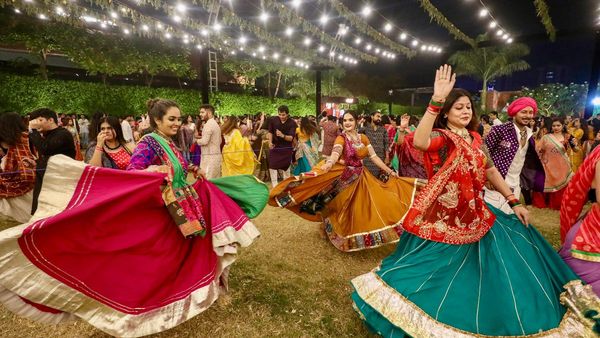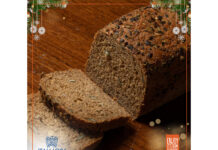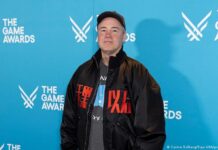JAMNAGAR: People all over the nation are celebrating Navratri with fervour and enthusiasm. Visitors from abroad also joined the locals in Jamnagar to watch the youth perform a Garba.
Nastasia from Germany said, “…It was a very special experience. I researched for a year to come here. We can attend many Garba functions in Jamnagar or across Gujarat or around the world but this is very special because they dance with fire, they dance traditional Garba and this is not in many places…
In Jamnagar, women also danced the traditional ‘Indhoni Raas Garba’ while wearing burning “Indhoni” on their heads. The ‘Indhoni’ is a pot holder used in Indian culture to hold a ‘kalash’ on the head.
#WATCH | Gujarat: Carrying aflame ‘indhoni’ on their head, women perform the traditional Indhoni Raas Garba in Jamnagar. (06.10.2024)
Indhoni is a pot holder used in Indian culture to hold a ‘kalash’ on the head. pic.twitter.com/u8oljEH0Fu
— ANI (@ANI) October 7, 2024
Navratri, which means ‘nine nights’ in Sanskrit, is dedicated to the worship of Goddess Durga and her nine avatars, known as Navdurga. The festival is celebrated with great devotion across India, with rituals and prayers honouring the goddess in her various forms.
Hindus observe four Navratris throughout the year, but only two–Chaitra Navratri and Shardiya Navratri–are widely celebrated, as they coincide with the changing of the seasons. In India, Navratri is celebrated in various ways.
From Ashwin Shukla Paksha’s Navami until the Pratipada, Shardiya Navratri is observed. While it is celebrated with great fanfare across the nation, distinct traditions are more commonly practised in different states.
In Gujarat, people perform ‘Garba’ on the occasion of Navratri and celebrate the festival with enthusiasm and zeal. People dance with full enthusiasm to the traditional tunes of Garba, which honours Goddess Durga during the Navratri festival.
Meanwhile, in various parts of the country, Ram Leela, a celebration in which scenes from the Ramayana are also performed during the Navratri festival.
In North India, particularly in Uttar Pradesh, Uttarakhand, Bihar, and Madhya Pradesh, the Ramlila, a dramatic re-enactment of scenes from the Ramayana, is organised. The festival concludes with Vijayadashami, marked by the burning of King Ravana’s effigies. ‘Vijyayadashmi’ or ‘Dussehra’, is celebrated to mark the triumph of good over evil. (ANI)
Also Read: Dussehra festivities bring back customers to sweet shops







